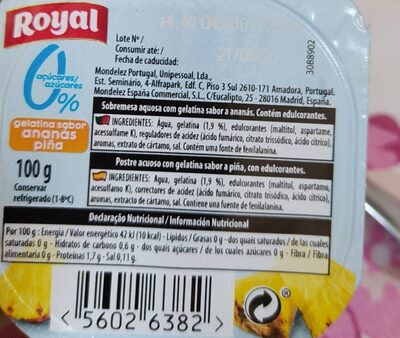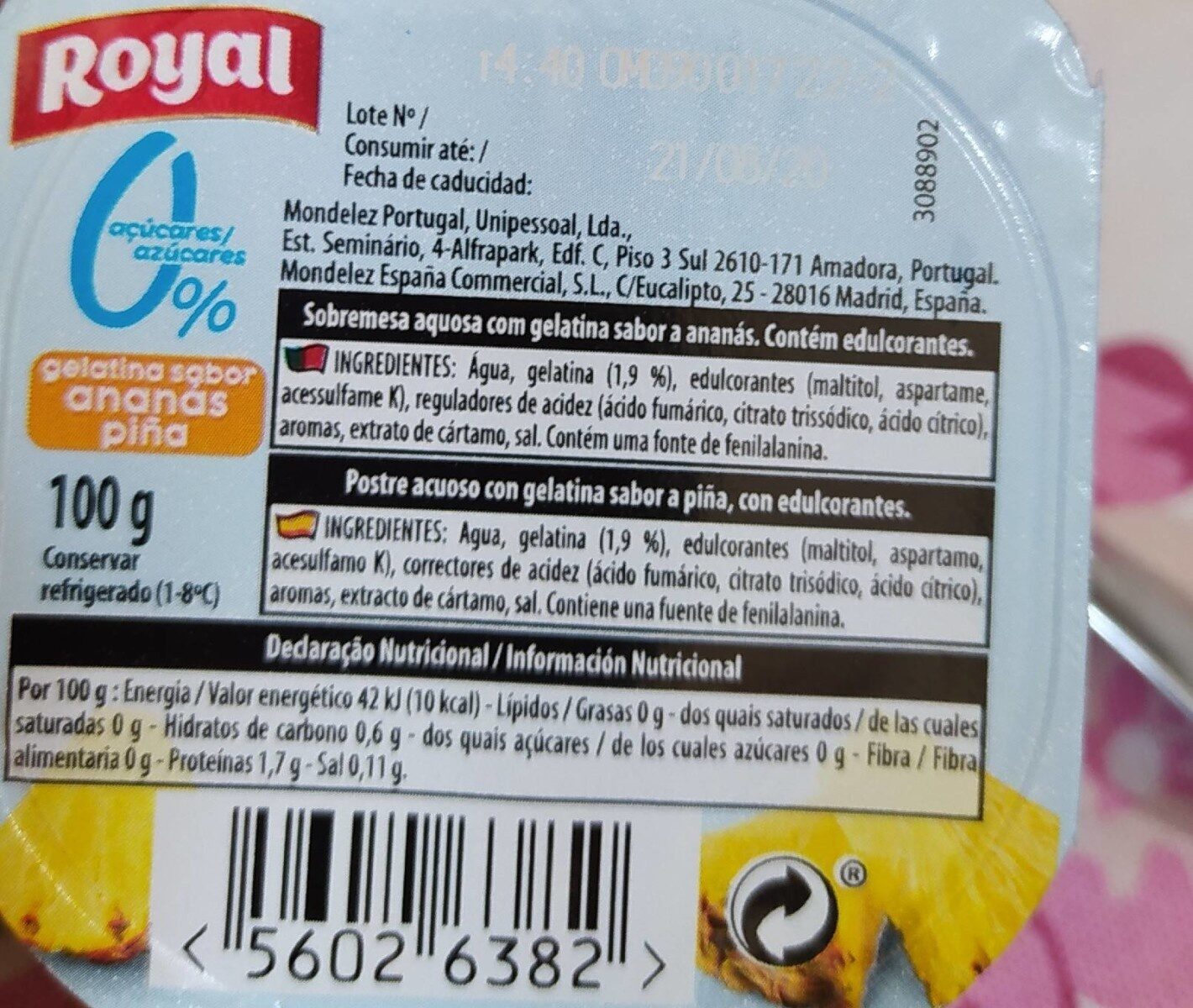Gelatina Light - Ananas - Royal
Aquesta pàgina del producte no està completa. Podeu ajudar a completar-la editant-la i afegint-hi més dades a partir de les fotos ja disponibles, o fent-ne més amb l'aplicació de androide o iPhone / iPad. Gràcies!
×
Codi de barres: 56026382
Marques: Royal
Categories: Postres, en:Jelly desserts
Etiquetes, certificacions, premis:
Conté una font de fenilalanina, Punt verd
Matching with your preferences
Entorn
Empaquetament
Transport
Report a problem
Fonts de dades
Producte afegit per kiliweb
Última modificació de la pàgina del producte per spotter.
La pàgina del producte, també editada per acuario, elcoco, moon-rabbit, roboto-app, thaialagata, yuka.C6p4IPGgId4CRcH2058o1TuFRP_FB9BHQWAIoQ, yuka.F7lTNs-2GsF-BsHJiqMthAajMr6xPONgSCMXoQ, yuka.JLUTIsWRJfF9NvTp6r820BWpT9vwKOdEH3hRow, yuka.L-5mBsGEBZMiTcfx7t5swAmdGL39OtRhGnkNog, yuka.Ui9vblFaOHZuZFlwbmRnanBqTHV5dDVOeExXMmIyR3FBYkFiSVE9PQ, yuka.YUpnR0Q0a0x2YU1YdS9KbjBnK0x3TXR0dzdINWRFS09Pc0V6SUE9PQ.









